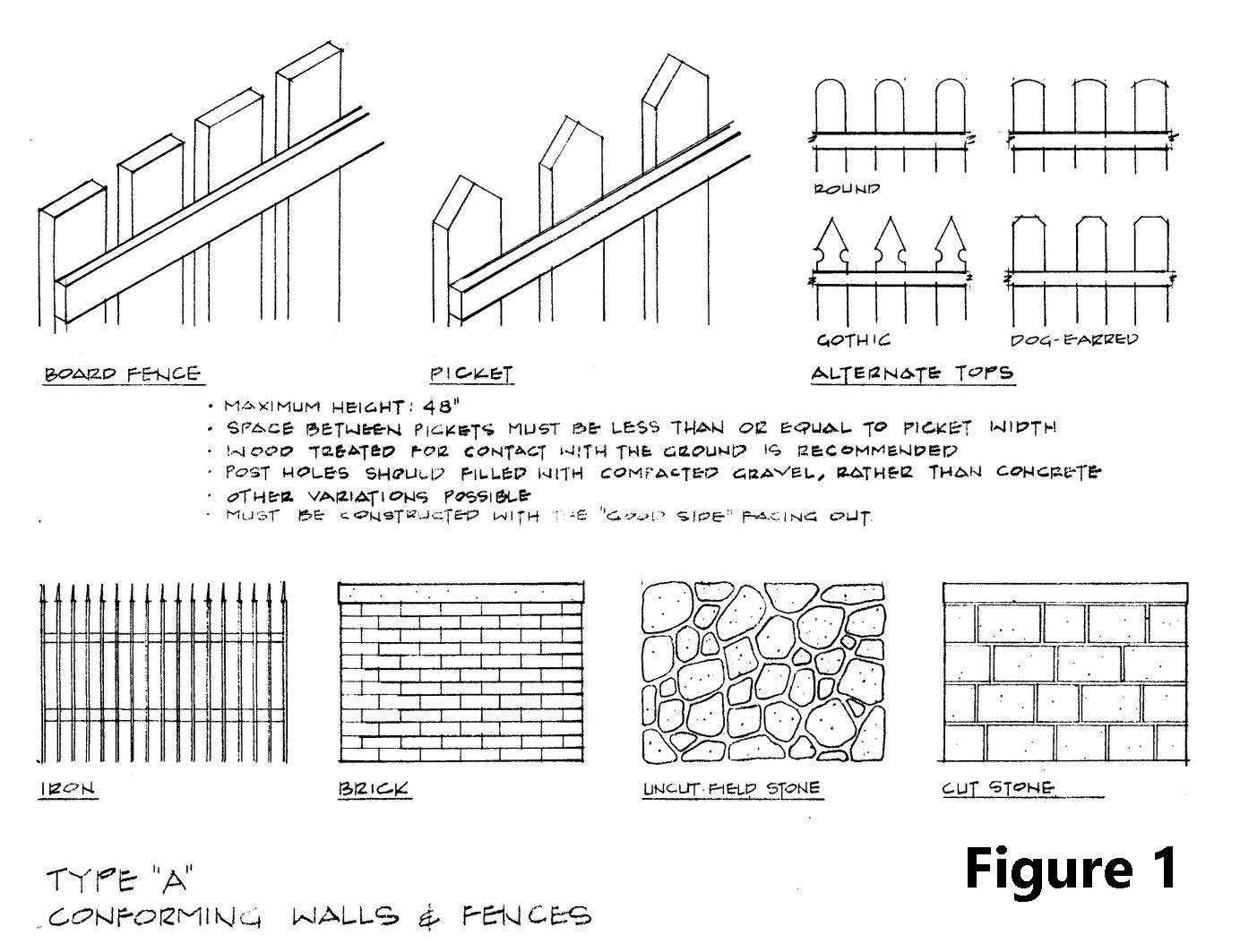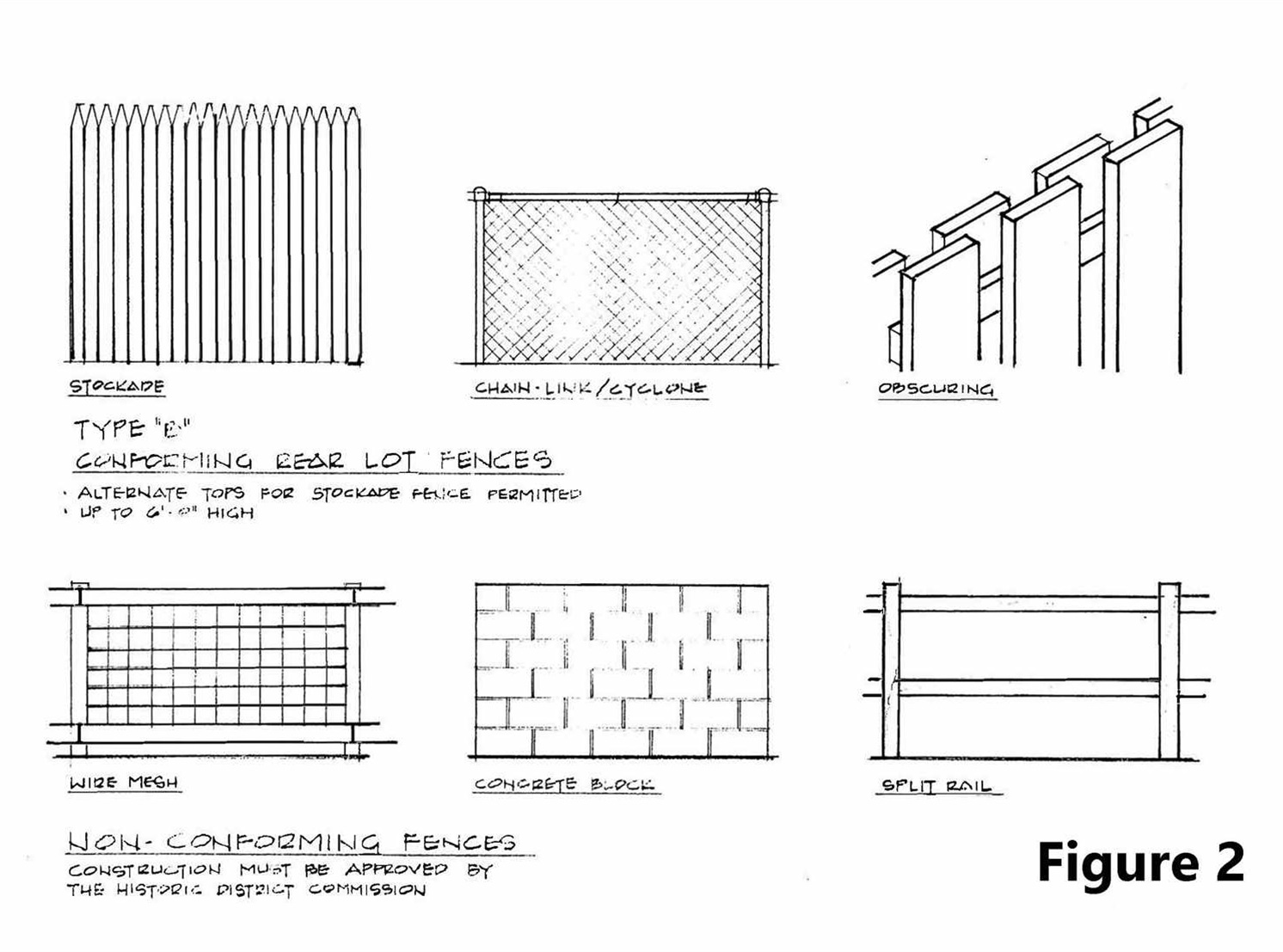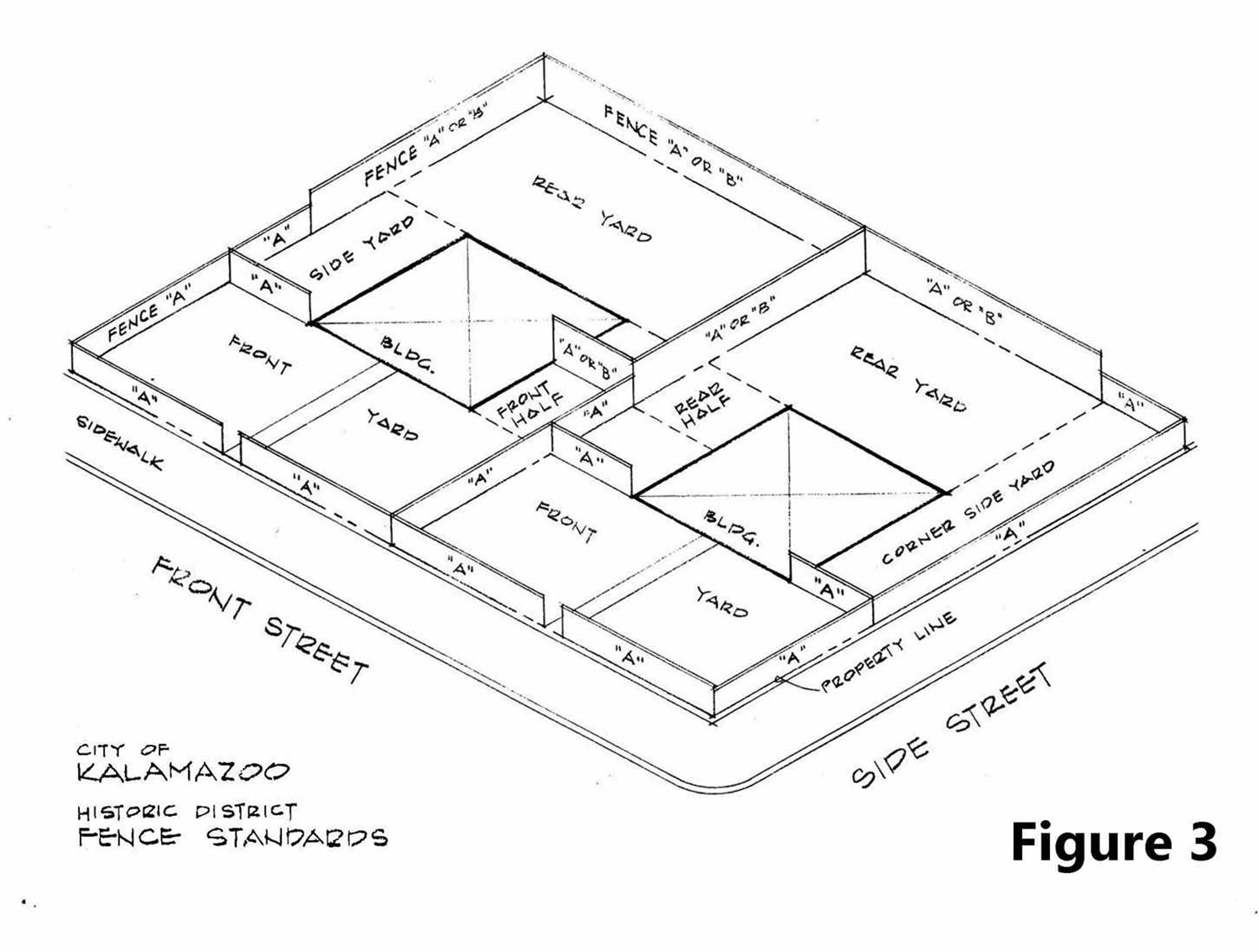Fences
Fences and gates are an extension of the architecture of the house. The material and style should be compatible the house and the fence should be proportionate to the house. Fencing that is visible from the public right-of-way as far back as half the depth of the house must meet historic district standards. Fencing toward the rear of the lot may need to be higher or be made of less historically appropriate materials in order to address a security need. According to the secretary of the Interior’s Standards, additions such as fences “should be compatible with the size, scale, material and character of the property, neighborhood or environment.”
Definition
For the purposes of these Standards and Guidelines, fences means any structure, not integral to any building, used as a barrier to define boundaries, screen off, or enclose a portion of property.
Categories of Fencing
There are two categories of fences in the historic districts. They are differentiated primarily by height and secondarily by material.
Type A Fencing
Type A Fencing is no more than four feet tall and made of flat-topped wooden boards, pickets with points, round tops, dog ears or Gothic tops. Spacing between boards should be a minimum of one inch up to the width of the board. The type A fence may be used anywhere on the lot and is not specifically restricted to any location.

Type B Fencing
Type B Fencing may be up to eight feet tall, and made of flat boards or pickets with points, round tops, dog ears or Gothic tops. Also allowed are chain-link, wire mesh and other “modern” fencing materials. Type B fencing is restricted to use at the rear half of the lot only, beginning at least halfway between the front and rear setback lines (the depth of the house) and the rear property line.

Corner Lot Fencing
Corner Lots the same rules apply except type B fencing will be allowed beginning immediately behind the side setback line (rather than halfway between the front and rear.)

Approved Materials
Posts: Redwood, cedar or pressure treated wood for wooden fences
Pickets: Redwood, cedar, pine or pressure treated wood.
Tip: For a more stable fence, sink posts the below the frost line – 42 inches deep.
Other Fences
Proposed work which does not meet these standards, including, but not limited to: stone or brick walls, iron fences and other wooden fence designs not meeting these Standards must be reviewed by the full commission.
Screening for Mechanical Equipment
Whenever possible mechanical equipment, such as air conditioner compressors, should be installed in a location that minimizes visibility, such as behind the house. The equipment should be screened from view with any of the approved fencing styles on the following pages or a framed lattice as approved for porch skirts. (see porch skirts and illustration #5.)
Guidelines for Fences
Fencing needs to complement the primary structure in materials, scale and style. Any fencing application, which does not meet the STANDARDS, will need to be reviewed by the full commission.
The Secretary of the Interiors Standards recommend against:
Introducing any new building, streetscape or landscape feature that is out of scale or otherwise inappropriate to the settings historic character.
Introducing a new landscape feature or plant material that is visually incompatible with the site or destroys site patterns or vistas.
Kalamazoo’s Historic District Commission does not regulate plantings or paving, so “landscape feature” as used above refers to fences. The commission encourages designs beyond simple picket fences and a list of traditional and appropriate styles as built within the historic district can be found above.
Brick or stone walls: Walls need to complement the scale of the house. For example, a stone wall four feet high would be inappropriate for a single story late 19th century cottage but would be a handsome addition to a large Italianate or a Craftsman Foursquare.
Cast Iron or metal fencing: Cast iron fencing can be appropriate for most nineteenth century houses and occasionally for early twentieth century houses
Landscaping & Retaining Walls
Generally, the Historic District Commission does not rule on landscaping such as trees, bushes, foundation plantings, garden beds or paving. Retaining walls are an exception to this rule.
Original retaining walls: Throughout Kalamazoo, handsome stone and decorative concrete block retaining walls add character to the city. Where an original retaining wall exists, every effort must be made to repair it rather than demolish it and replace it with new materials.
New retaining walls: When yards are re-configured, retaining walls may need to be added. The commission reserves the right to review the installation of new retaining walls. The material must be compatible with the period of the property and in scale to the building. Stacking or interlocking pre-cast material will generally not be approved.